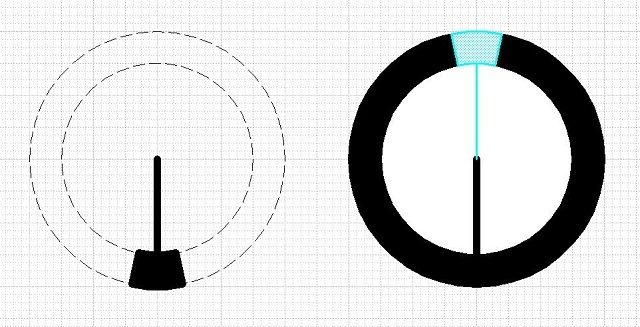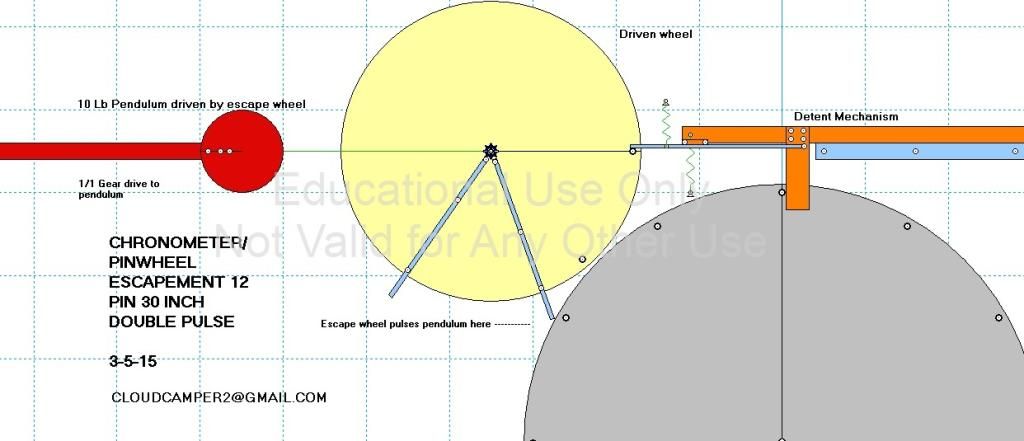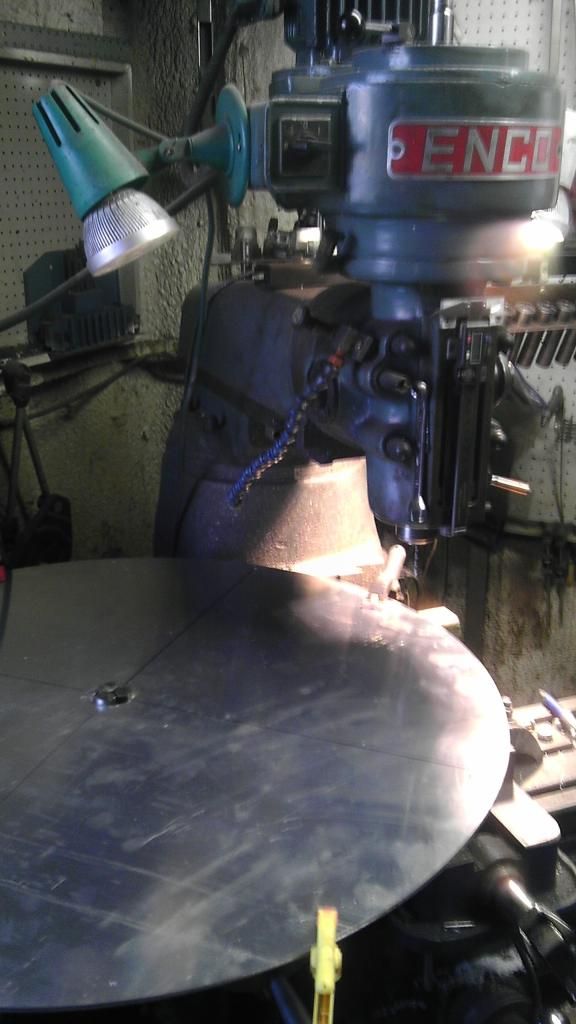It would seem the history of PM attempts is intimately and inseparably connected with the development of the clock.
And the clock is a development of early attempts to understand astronomical events. In the book “On the Origin of Clockwork, Perpetual Motion Devices, and the Compass� by Derek J DeSolla Price, a masterful study of the origins is presented.
Derek portrays how these early attempts at incorporating astronomical movements into a mechanical device led to the clock and how a clock is just a simplified “astrolabe� or pictorial, either a 2 or 3 dimensional mechanical model of movements of the sun, moon and planets.
We then see how the development of complex gearing allowed sophisticated astrolabes to be created and subsequent development of the escapement allowed the clock to be invented.
One of the most incredible astrolabes discovered is the Antikythera Machine retrieved from a sunken shipwreck in 1901 off Antikythera Island in the Mediterranean dated to an impossible 65 BC which required complex gear train manufacturing in an era more than a thousand years before any were known to exist.
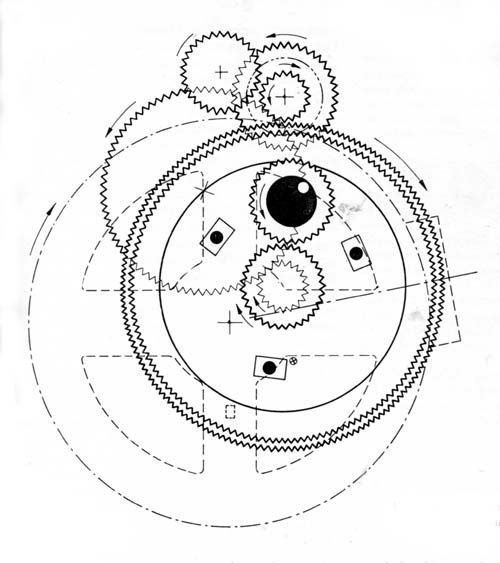
Antikythera device gearing from Derek's book
So it appears a careful study of the clock and required escapement mechanisms is a good place to spend some time in the development of a PM device.
After this, a study of escapements to determine which are suitable for use in a PM device and what the advantages/disadvantages of each may be.
Then we can simulate use of a optimized escapement designed for a PM device (not just an animation).
Of course timekeeping requirements are not present in a PM machine, only the requirement to feed back power on a discrete and timely basis from a secondary oscillator circuit to the primary. The idea here is the power returned from the secondary is used to replenish the basic store of energy that is then lost through mechanical friction and windage losses, consumed by the primary while driving the secondary system.
The main concerns in an escapement used for PM purposes are then very low friction with an additional requirement that the secondary oscillator mechanism can only transmit power in one direction back to the primary so that losses in the primary are not passed backward thru the loop closing mechanism to the secondary.
This would destroy the entire purpose of a secondary oscillator mechanism. Essentially what is required is a mechanical “diode�. We can call this “closing the loop� in PM.
So the escapement provides two necessary functions, keeping the energy tank “topped up� in a pulse type fashion in the primary system and preventing power from going the wrong way around the loop.
From Derek’s book:
“Ancestor of the mechanical clock has been thought by some to be the sundial. Actually these devices represent two different approaches to the problem of time-keeping. True ancestor of the clock is to be found among the highly complex astronomical machines which man has been building since Hellenic times to illustrate the relative motions of the heavenly bodies.
This study—its findings will be used in preparing the Museum's new hall on the history of time-keeping—traces this ancestry back through 2,000 years of history on three continents.�
“The histories of the mechanical clock and the magnetic compass must be accounted amongst the most tortured of all our efforts to understand the origins of man's important inventions. Ignorance has too often been replaced by conjecture, and conjecture by misquotation and the false authority of "common knowledge" engendered by the repetition of legendary histories from one generation of textbooks to the next. In what follows, I can only hope that the adding of a strong new trail and the eradication of several false and weaker ones will lead us nearer to a balanced and integrated understanding of medieval invention and the intercultural transmission of ideas.
For the mechanical clock, perhaps the greatest hindrance has been its treatment within a self-contained "history of time measurement" in which sundials, water-clocks and similar devices assume the natural role of ancestors to the weight-driven escapement clock in the early 14th century. This view must presume that a generally sophisticated knowledge of gearing antedates the invention of the clock and extends back to the Classical period of Hero and Vitruvius and such authors well-known for their mechanical ingenuities.
Furthermore, even if one admits the use of clocklike gearing before the existence of the clock, it is still necessary to look for the independent inventions of the weight-drive and of the mechanical escapement. The first of these may seem comparatively trivial; anyone familiar with the raising of heavy loads by means of ropes and pulley could surely recognize the possibility of using such an arrangement in reverse as a source of steady power. Nevertheless, the use of this device is not recorded before its association with hydraulic and perpetual motion machines in the manuscripts of Riḍwān, ca. 1200, and its use in a clock using such a perpetual motion wheel (mercury filled) as a clock escapement, in the astronomical codices of Alfonso the Wise, King of Castile, ca. 1272.
The second invention, that of the mechanical escapement, has presented one of the most tantalizing of problems. Without doubt, the crown and foliot type of escapement appears to be the first complicated mechanical invention known to the European Middle Ages; it heralds our whole age of machine-making.
Yet no trace has been found either of a steady evolution of such escapements or of their invention in Europe, though the astronomical clock powered by a water wheel and governed by an escapement-like device had been elaborated in China for several centuries before the first appearance of our clocks. We must now rehearse a revised story of the origin of the clock as it has been suggested by recent researches on the history of gearing and on Chinese and other astronomical machines.
After this we shall for the first time present evidence to show that this story is curiously related to that of the Perpetuum Mobile, one of the great chimeras of science, that came from its medieval origin to play an important part in more recent developments of energetics and the foundations of thermodynamics. It is a curious mixture, all the more so because, tangled inextricably in it, we shall find the most important and earliest references to the use of the magnetic compass in the West. It seems that in revising the histories of clockwork and the magnetic compass, these considerations of perpetual motion devices may provide some much needed evidence.
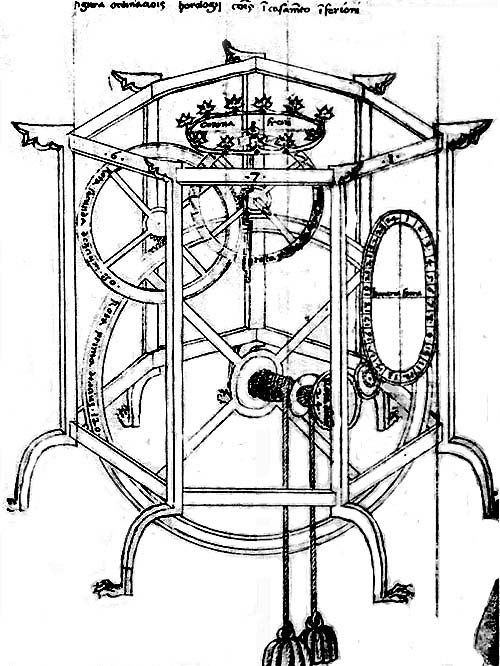
Framework Structure of Astronomical clock of de Dondi AD 1364
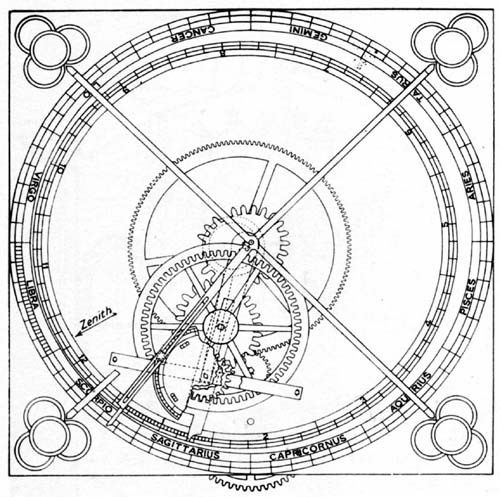
Astronomical clock of de Dondi
MECHANICAL CLOCKS - THE EUROPEAN TRADITION
If one is to establish a terminus ante quem for the appearance of the mechanical clock in Europe, it would appear that 1364 is a most reasonable date. At that time we have the very full mechanical and historical material concerning the horological masterpiece built by Giovanni de Dondi of Padua, and probably started as early as 1348. It might well be possible to set a date a few decades earlier, but in general as one proceeds backwards from this point, the evidence becomes increasingly fragmentary and uncertain. The greatest source of doubt arises from the confusion between sundials, water-clocks, hand-struck time bells, and mechanical clocks, all of which are covered by the term horologium and its vernacular equivalents.
Temporarily postponing the consideration of evidence prior to ca. 1350, we may take Giovanni de Dondi as a starting point and trace a virtually unbroken lineage from his time to the present day. One may follow the spread of clocks through Europe, from large towns to small ones, from the richer cathedrals and abbeys to the less wealthy churches.
There is the transition from the tower clocks—showpieces of great institutions—to the simple chamber clock designed for domestic use and to the smaller portable clocks and still smaller and more portable pocket watches. In mechanical refinement a similar continuity may be noted, so that one sees the cumulative effect of the introduction of the spring drive (ca. 1475), pendulum control (ca. 1650), and the anchor escapement (ca. 1680).
The transition from de Dondi to the modern chronometer is indeed basically continuous, and though much research needs to be done on special topics, it has an historical unity and seems to conform for the most part to the general pattern of steady mechanical improvement found elsewhere in the history of technology.
Most remarkable however is the earliest period of this seemingly steady evolution. Side by side with the advances made in the earliest period extending for less than two centuries from the time of de Dondi one may see a spectacular process of degeneration or devolution. Not only is de Dondi's the earliest clock of which we have a full and trustworthy account, it is also far more complicated than any other (see Figs. 1, 2) until comparatively modern times! Moreover, it was not an exceptional freak. There were others like it, and one cannot therefore reject as accidental this process of degeneration that occurs at the very beginning of the certain history of the mechanical clock in Europe.
On the basis of such evidence I have suggested elsewhere that the clock is "nought but a fallen angel from the world of astronomy." The first great clocks of medieval Europe were designed as astronomical showpieces, full of complicated gearing and dials to show the motions of the Sun, Moon and planets, to exhibit eclipses, and to carry through the involved computations of the ecclesiastical calendar. As such they were comparable to the orreries of the 18th century and to modern planetariums; that they also showed the time and rang it on bells was almost incidental to their main function.
One must not neglect, too, that it was in their glorification of the rationality of the cosmos that they had their greatest effect. Through milleniums of civilization, man's understanding of celestial phenomena had been the very pinnacle of his intellect, and then as now popular exhibition of this sort was just as necessary, as striking, and as impressive. One does not have to go far to see how the paraphernalia of these early great astronomical clocks had great influence on philosophers and theologians and on poets such as Dante.
It is the thesis of this part of my argument that the ordinary time-telling clock is no affiliate of the other simple time-telling devices such as sundials, sand glasses and the elementary water clocks. Rather it should be considered as a degenerate branch from the main stem of mechanized astronomical devices (I shall call them protoclocks), a stem which can boast a continuous history filling the gap between the appearance of simple gearing and the complications of de Dondi. We shall return to the discussion of this main stem after analyzing the very recently discovered parallel stem from medieval China, which reproduced an incidental time telling. Of the greatest significance, this stem reveals the crucial independent invention of a mechanical escapement, a feature not found in the European stem in spite of centuries of intensive historical research and effort.
PERPETUAL MOTION AND THE CLOCK BEFORE de DONDI
We have already noted, more or less briefly, several instances of the use of wheels "moving by themselves" or the use of a fluid for purposes other than as a motive power. Chronologically arranged, these are the Indian devices of ca. 1150 or a little earlier, as those of Riḍwān ca. 1200, that of the Alfonsine mercury clock, ca. 1272, and the French Bible illumination of ca. 1285. This strongly suggests a steady transmission from East to West, and on the basis of it, we now tentatively propose an additional step, a transmission from China to India and perhaps further West, ca. 1100, and possibly reinforced by further transmissions at later dates.
One need only assume the existence of vague traveler's tales about the existence of the 11th-century Chinese clocks with their astronomical models and jackwork and with their great wheel, apparently moving by itself but using water having no external inlet or outlet. Such a stimulus, acting as it did on a later occasion when Galileo received word of the invention of the telescope in the Low Countries, might easily lead to the re-invention of just such perpetual-motion wheels as we have already noted. In many ways, once the idea has been suggested it is natural to associate such a perpetual motion with the incessant diurnal rotation of the heavens. Without some such stimulus however it is difficult to explain why this association did not occur earlier, and why, once it comes there seems to be such a chronological procession from culture to culture.
We have reserved to the last one section of evidence which may or may not be misleading, the famous notebook of Villard (Wilars) of Honnecourt, near Cambrai. The album, attributed to the period 1240-1251, contains many drawings with short annotations, three of which are of special interest to our investigations. These comprise a steeplelike structure labeled "cest li masons don orologe" (this is the house of a clock), a device including a rope, wheel and axle, marked "par chu fait om un angle tenir son doit ades vers le solel" (by this means an angel is made to keep his finger directed towards the sun), and a perpetual motion wheel which we shall reserve for later discussion.
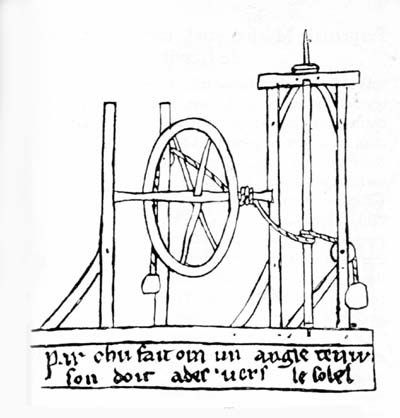
Possible Escapement Mechanism 1240 AD - Villard
The clock tower, according to Drover, shows no place for a dial but suggests the use of bells because of its open structure, suitable for letting out the sound. Moreover, he suggests that the delicacy of the line indicates that it was not really a full-size steeple but rather a small towerlike structure standing only a few feet high within the church. There is, alas, nothing to tell us about the clock it was intended to house; most probably it was a water clock similar to that of the illustrated Bible of ca. 1285.
The drawing of the rope, wheel and axles, for turning an angel to point towards the sun can have a simple explanation or a more complicated one. If taken at its face value the wheel on its horizontal axis acts as a windlass connected by the counterpoised rope to the vertical shaft which it turns, thereby moving (by hand) the figure of an angel (not shown) fixed to the top of this latter shaft. Such an explanation was in fact suggested by M. Quicherat, who first called attention to the Villard album and pointed out that a leaden angel existed in Chartres before the fire there in 1836. It is a view also supported from another drawing in the album which describes an eagle whose head is made to turn towards the deacon when he reads the Gospel. Slight pressure on the tail of the bird causes a similar rope mechanism to operate.
A quite different interpretation has been suggested by Frémont; he believes that the wheel may have acted as a fly-wheel and the ropes and counterpoises, turning first one way then the other acted as a sort of mechanical escapement. Such an arrangement is however mechanically impossible without some complicated free-wheeling device between the drive and the escapement, and its only effect would be to oscillate the angel rapidly rather than turn it steadily. I believe that Frémont, over-anxious to provide a protoescapement, has done too much violence to the facts and turned away without good reason from the more simple and reasonable explanation.
It is nevertheless still possible to adopt this simple interpretation and yet to have the system as part of a clock. If the left-hand counterpoise, conveniently raised higher than that on the right, is considered as a float fitting into a clepsydra jar, instead of as a simple weight, one would have a very suitable automatic system for turning the angel. On this explanation, the purpose of the wheel would be merely to provide the manual adjustment necessary to set the angel from time to time, compensating for irremediable inaccuracies of the clepsydra.
Having discussed the Villard drawings which are already cited in horological literature, we must draw attention to the fact that this medieval architect also gives an illustration of a perpetual motion wheel. In this case it is of the type having weights at the end of swinging arms, a type that occurs very frequently at later dates in Europe and is also given in the Islamic texts. We cannot, in this case, suggest that drawings of clocks and of perpetual motion devices occur together by more than a coincidence, for Villard seems to have been interested in most sorts of mechanical device.
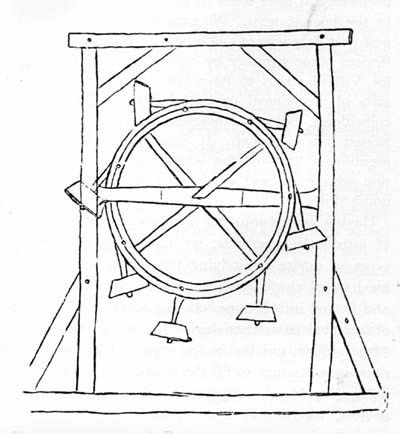
Perpetual Motion Wheel - Villard 1240 AD
But even this type of coincidence becomes somewhat striking when repeated often enough. It seems that each early mention of "self-moving wheels" occurs in connection with some sort of clock or mechanized astronomical device.
Having now completed a survey of the traditions of astronomical models, we have seen that many types of device embodying features later found in mechanical clocks evolved through various cultures and flowed into Europe, coming together in a burst of multifarious activity during the second half of the 13th century, notably in the region of France. We must now attempt to fill the residual gap, and in so doing examine the importance of perpetual motion devices, mechanical and magnetic, in the crucial transition from protoclock to mechanical-escapement clock.�
Derek J. de Solla Price. On the Origin of Clockwork, Perpetual Motion Devices, and the Compass
http://www.gutenberg.org/ebooks/30001
We could continue with Derek’s studies and should to explore the amazing Antikythera device but the main sequence of events was the development of precise gear trains leading to the invention of the astrolabes (which Derek denotes as protoclocks), then the escapement which Derek's studies shows as probably originating in China then finally the clock coming forth in Europe.
And we note that the escapement mechanism has been a continual and interwoven component of many PM attempts so now we will study some different escapements and try and pick one most suitable for use in a PM device. Since the mechanical clock can be considered as an “almost� PM device, which type of escapements would most align itself with the requirements and serve to “close the loop�.
A great reference here is the “Escapements in Motion� page: http://www.abbeyclock.com/escapement.html
Another great reference is the Wiki page http://en.wikipedia.org/wiki/Escapement
We will find a bewildering list of designs all with the goal of accurate timekeeping and being constructable in a very small form factor (like a watch). But we have no such requirements in a PM device.
The other limitation created by most of these designs is a very limited allowed range of swing by the pendulum or balance wheel. Of course in timekeeping it was found that the smaller a swing, the more accurate the period making a small swing desirable. Again, we have no such concern in a PM device and our requirements are a preferably large swing of the pendulum allowing more energy to be initially stored and a very low friction coefficient overall.
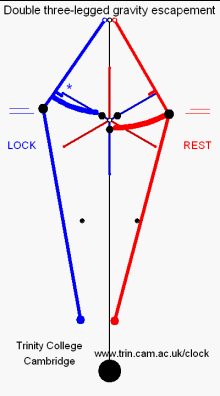
Gravity Escapement - Wiki Page
We observe this problem in the Gravity escapement and it looks to be a very easy to construct mechanism but with the unfortunate attribute of allowing only a very short swing. Also the double throw feature is problematic at least in my build attempt.
After studying these different designs, are there any that come close to matching these requirements? To keep things short, YES, the Chronometer escapement fills all the requirements! How fortunate as otherwise a completely new type of escapement would have to be developed (a prodigious undertaking).
The Chronometer escapement is close to ideal for our purposes as it has very low friction, tolerates a large swing in the primary pendulum and turns out to be very easy to construct in a size factor suitable for a largish PM machine.
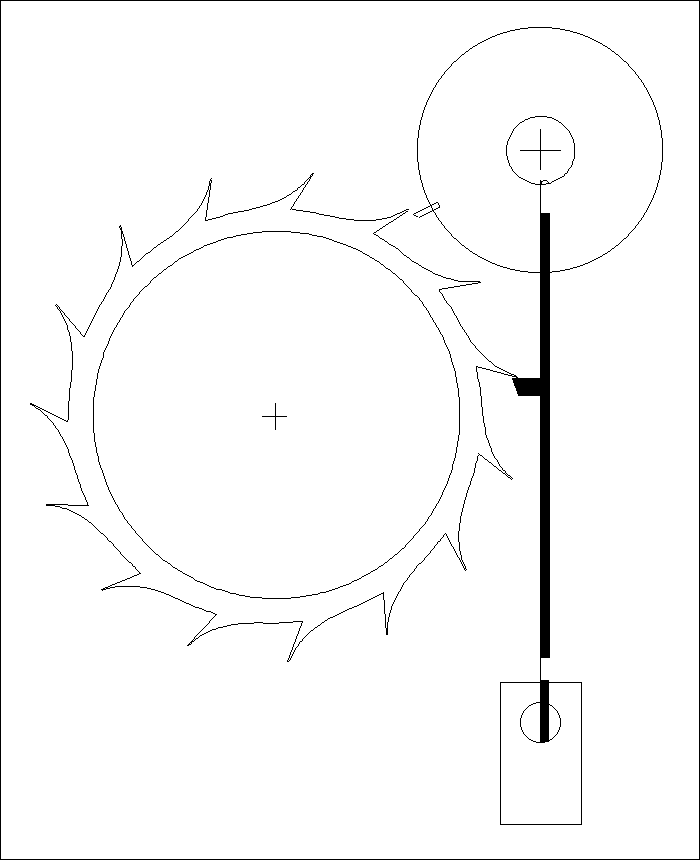
Chronometer Escapement Animation- Escapements in Motion page
The Chronometer (also called a Detent) is a detached escapement; as it allows the balance wheel to swing undisturbed during most of its cycle, except during the brief impulse period, which is only given once per cycle (every other swing).
Because the driving escape wheel tooth moves almost parallel to the striker bar, the escapement has little friction and did not need oiling. For these reasons among others the Chronometer was considered the most accurate escapement for balance wheel timepieces
The Chronometer escapement could keep time within 1 or 2 seconds per day but unfortunately was was fragile and required skilled maintenance; it was not self-starting. It was also very hard to manufacture.
For a mechanical simplification, the Chronometer can be combined with aspects of the Pin Wheel escapement, using ½� round pin rollers instead of the difficult to machine teeth which appear in the animation above. So we could dub this escapement the Chronometer/Pinwheel. As a modification of an existing design, this also makes this design patentable.
With this change, the concept is now very suitable to a simulation attempt in WM2D! I have seen no other escapement simulations attempted at least on the BW site. There is one chronometer simulation on YT for timekeeping: https://www.youtube.com/watch?v=nJ_k4VbAeGY
The layout dimensions for the escapement can be calculated from instructions in this Ebook downloadable here: http://www.abbeyclock.com/EscMechanics.pdf
I have selected a 30�dia for the escapement wheel which results in a 9� dia for the driven wheel. This is large enough to keep a 10 lb pendulum swinging! To keep the sim from getting too cluttered, the actual pendulum is driven by a 1/1 geared driveshaft. Also, a second undriven pendulum is added below as a comparison. The undriven pendulum is subject to mechanical and windage friction of course degrading the swing.
A typical Chronometer escapement wheel uses 15 teeth for greatest timekeeping accuracy but I have found by reducing to 12 one can get more throw in the pulse width, increasing the force x distance available for each pulse. Again, we are not concerned about timekeeping in a PM device but in restoring energy to the primary oscillator.
For this escapement, the lower diagonal striker bar on the driven wheel sweeps by the escapement wheel pin at 10:30 barely clearing it, then the Detent mechanism is tripped by raising the entire detent bar allowing the 12:00 pin to “escape� the vertical part of the detent arm. The pin back at 10:30 then catches and pushes/pulses the driven wheel which is directly geared to the pendulum at left. This makes for an extremely efficient process as the escapement wheel pins are actually rollers which eliminate any sliding friction.
We see that the swinging part of the detent bar (which contacts the single pin of the driven wheel) only causes the detent bar to trip upwards when the driven wheel is rotating CCW. When the driven wheel swings back CW the main detent bar is not affected.
So the pendulum only gets pulsed in one direction, or once every full swing of the pendulum. This is actually desirable as the primary oscillator will be moving somewhat slower on this part of the cycle as some of the initial energy has been lost driving the secondary oscillator at that point.
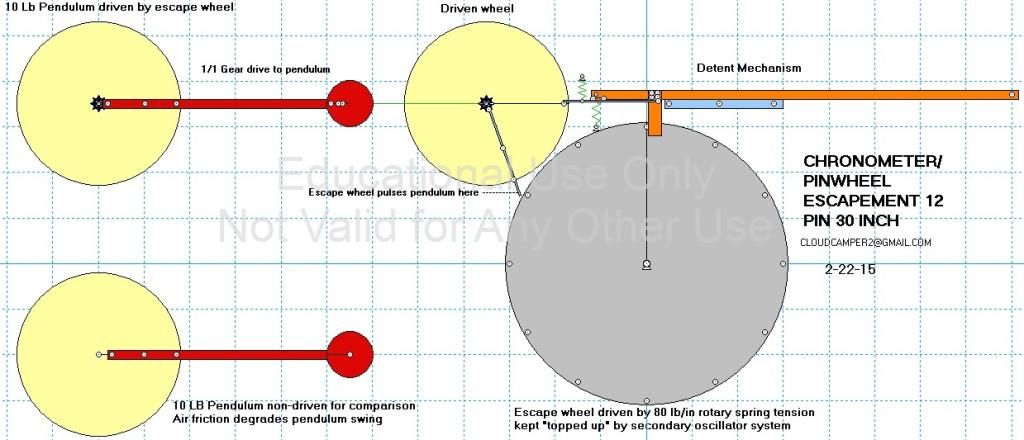

If we stand back from the process, we see that we have a “you scratch my back, I’ll scratch yours� mechanical arrangement, or more precisely a physical handshaking protocol, almost as used in computer file transfers.
All parameters for the escapement are very critical, with a small change in one area requiring multiple changes in all other parameters to get it all to work. I can really admire the creativity and persistence of the early horologists as they developed these mechanisms, with no benefit from computer simulations!
For the simulation, the primary pendulum is not under load so with each pulse causes the primary oscillator (pendulum) to gain PE. In the actual device, the strength of the pulse must be adjusted exactly to the loss of PE on each swing due to losses driving the secondary oscillator system. That may prove difficult on the physical PoP.
But the secondary oscillator I have chosen provides a greater than 2/1 return on energy expended (in simulation) so hopefully will be enough left over after frictional losses to hoist a load of bricks or two!
I plan to use the escapement in both my current project to close the loop as well as in the Rotary Milkovic Oscillator (Gravity Pump) http://www.besslerwheel.com/forum/viewt ... a09a90ee76
I have also filed for a Provisional Patent on this device as it is a modification of an existing design and is intended for a different application than timekeeping.
So is this the perfect escapement for use in a PM device? Couldn't say for sure, but it seems a fair start!
Click on the below images to run the sim. They may be downloaded from the Photobucket page if play is too erratic.


